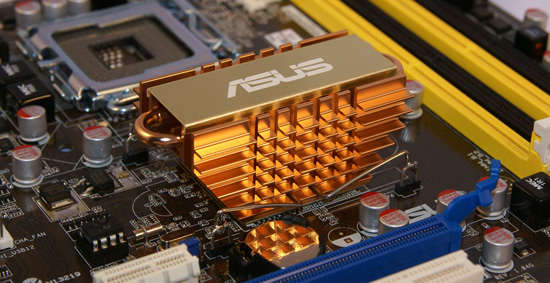The IGP Chronicles Part 3: NVIDIA's GeForce 9300
by Anand Lal Shimpi & Gary Key on October 15, 2008 12:00 AM EST- Posted in
- Motherboards
Final Words
Everyone likes a clean victory; while NVIDIA has the opportunity to obtain just that with the GeForce 9300, there are a handful of lingering issues that cause them to hit just wide of the bullseye. It's a tough conclusion to make; while my HTPC experiences with the GeForce 9300 were fairly flawless, Gary had several issues, and both of us experienced poor memory performance with the platform. Being an early adopter in any case usually means dealing with the lion's share of problems, but with a product that's ready we don't normally have a long list of issues at launch; they generally crop up over time. We knew about the G45 issues and many of them are still unaddressed.
At least the GeForce 9300 issues don't fundamentally cause the platform not to work in a home theater setup, but they are bothersome nonetheless. Given the maturity of the GeForce 8200 as a platform on the AMD side we hoped for more from NVIDIA here, but at least it gives us a glimmer of hope that what we're talking about today will soon fade and we'll be left with an easily recommendable HTPC platform. Because honestly, if these problems are quickly addressed, the GeForce 9300 is as close to perfect as you're going to get for now.

Gaming performance is good enough to compete with what's out there today. The GeForce 9300 is leaps and bounds ahead of Intel's G45, but that's not really a tremendous accomplishment. What NVIDIA has done however is effectively bring 780G-class performance to the Intel platform, which is better than nothing. It's still short of what we want in terms of integrated graphics performance but it's a big step in the right direction.
The HTPC feature set is nearly complete; the only thing we're lacking is the ability to bitstream Dolby TrueHD and DTS-HD MA (both of which no chipset currently supports). Flawless HDMI/HDCP repeater compatibility? Check. Fully functional hardware acceleration? Yep. 8-channel LPCM? Of course. Stutter-free 24p playback? It seems so.
It would be nice to see some more effort put in on the software side, as I mentioned before, to enable configuration of your HTPC without needing a regular computer monitor. I've also been dying to see AMD, Intel or NVIDIA incorporate a real color management system in their drivers to easily enable HTPCs to function as true video processors and not just expensive Blu-ray players.
As far as chipsets with integrated graphics go, NVIDIA's GeForce 9300 won our hearts, I would just hold off on that first date until the kinks get worked out.










47 Comments
View All Comments
Badkarma - Wednesday, October 15, 2008 - link
Why would it be impossible to stream media? Most media streams are only a fraction of 100Mbit ethernet, even a full Blu-ray disc rarely hits 20+Mbit. The CPU usage charts for network traffic in this review are for full thoroughput tests, the NIC will never come close to pushing that much traffic when streaming media.Zstream - Wednesday, October 15, 2008 - link
I stream 300mbs/sec all the time on my HTPC with my gig Intel nic. I guess you never streamed across multiple devices. It is called VOD, if you do not believe me look at the newest tivo.R3MF - Wednesday, October 15, 2008 - link
Is this the chipset that nvidia is supposed to have worked with Via on to ensure Nano support?A HP mininote v2 using Nano and this mGPU would be an awesome product that would take a dump on every other netbook from a great height!
Hlafordlaes - Wednesday, October 15, 2008 - link
That's my understanding, too. I was wondering what the delay was caused by, now my guess is that Apple wanted the exclusive for launch. Let's hope some new mini-ITX 2.0 Nano boards with this chipset will appear soon.R3MF - Wednesday, October 15, 2008 - link
A lot of netbook newsites are reporting drastic price cuts in the mininote 2133, which is fueling speculation that a v2 may be due out soon.As it happens; there is already a petition requesting HP use the Nano + MCP79 combo in a future v2 mininote:
http://www.petitiononline.com/mininote/petition.ht...">http://www.petitiononline.com/mininote/petition.ht...
R3MF - Wednesday, October 15, 2008 - link
This chipset in ULV form is the one being used in the new MacbookAir, so there is no reason why it couldn't be used in netbooks like the HP Mininote, as adequately demonstrated in the power consumption page of this preview.R3MF - Thursday, October 16, 2008 - link
Do you have any thoughts or speculations you would like to share on whether this is the fabled Via Nano integrated chipset?It would be big news for those of us awaiting a powerful HP mininote v2..........